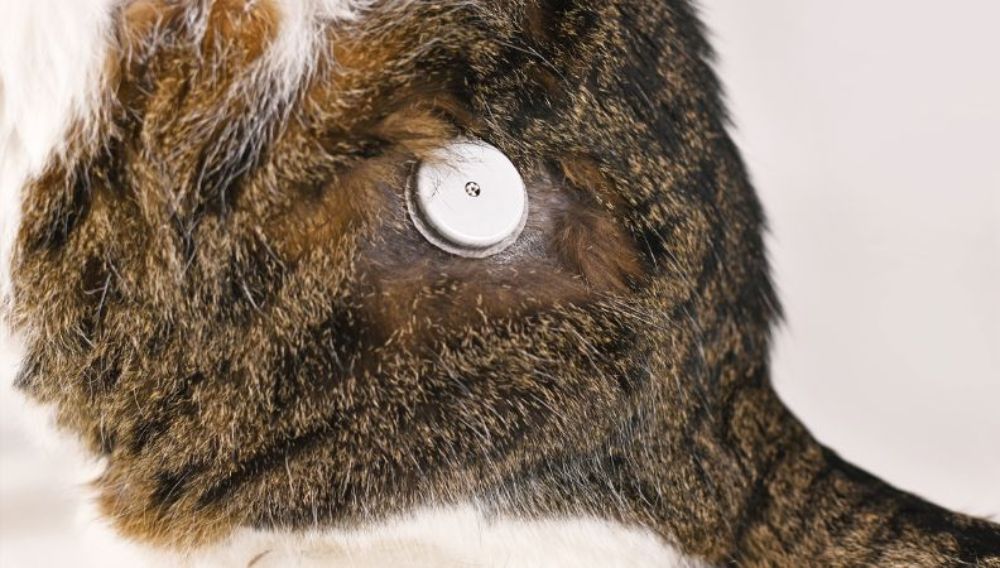
Diabetes in cats is a relatively common endocrine disease in middle-aged cats - around 1 in 200 may be affected. It is less likely for diabetes in kittens to be an issue. Studies have found an increased risk in certain cat breeds, such as the Burmese and Norwegian Forest.
This article will help you spot the signs of diabetes in your cat and help you to manage the condition successfully at home.
Can Cats Get Diabetes?
Cats can develop diabetes when they don't have enough insulin, which is needed to control their blood sugar levels. If blood sugar levels fall too low, the cat will develop hypoglycaemia. If the blood sugar levels become too high, hyperglycaemia results.
And, just as in humans with type 2 diabetes, being obese is a significant risk factor for the condition. Keeping your cat at their ideal weight is the best way to prevent the condition. Some cats are more likely to get diabetes, even if they're not overweight.
While diabetes can be fatal if left undiagnosed and untreated, most diabetic cats can now lead happy lives if their care is well-managed long-term.
Warning Symptoms of Diabetes in Cats
Affected cats are generally middle-aged (average ~11 years) and often obese. Diabetes in pets might look different for all species, but for cats, there are various warning signs to look out for:
- Polydipsia and polyuria (PU/PD): Is your cat experiencing excess thirst and peeing more than usual?
- Weight loss: Has your cat lost weight recently despite no changes to its eating habits?
- Muscle wastage: Has your cat's body condition changed?
- Lethargy: Is your cat appearing depressed and less active?
- Other signs include unkempt hair coat, bladder infections, vomiting, gait abnormalities and collapse.
When there isn't enough insulin, sugar (glucose) from food builds up in the blood, and cats will lose sugar in their urine. Your vet will carry out urine tests and blood tests on your cat to assess whether there is a high level of glucose.
Some other diseases can cause diabetes to appear in cats, so your vet will check for other conditions as well. Pancreatitis, hyperthyroidism, hyperadrenocorticism, and acromegaly are among the diseases linked with diabetes in cats.
A severe complication of diabetes is a condition called diabetic ketoacidosis (DKA). If your cat has stopped eating and is vomiting and dehydrated, this could mean that your cat has DKA (when ketones from the breakdown of body fat are detected in the urine). DKA is a life-threatening consequence of untreated diabetes and can lead to coma and death.

Cat Diabetes Treatment
Most diabetic cats will need insulin treatment to control their blood glucose levels. This usually means regular insulin injections - once or twice a day, e.g. every 12 hours, for the rest of your cat's life. Most vet owners find that, with practice, this is often easier than giving your cat tablets.
Vetpens, similar to the ones human diabetics inject with, are available for cats and are simple to use. Feeding at the time when you inject is usually practical and can be timed to fit in with your daily routine.
In recently diagnosed diabetic cats, there is a chance of diabetic remission if insulin therapy is started. However, some cat owners may be reluctant to start their cats on insulin injections. If your cat is obese, losing weight along with a tablet that will lower blood sugar (a hypoglycaemic drug) might avoid the need for insulin injections for a while. But most cats will require insulin injections.
There are three types of insulin used in cats: medium-acting insulin, long-acting insulin and longer-acting insulin analogues. Your vet will teach you how to give insulin shots and tell you how to store it properly. They will also provide you with diet instructions. You will also be shown how to monitor your cat for any signs of hypoglycaemia and how to treat low blood glucose.
The vet will recheck diabetic cats a few days after leaving the clinic. They will also require ongoing monitoring at home. You'll need to check their food and water, how they act, their weight, loss or increase in appetite, body condition, and urine sugar and ketone levels. The glucose in their blood will also need to be monitored to make sure it is displaying optimal glucose curves.
These factors indicate whether an increase or decrease in insulin is needed. Your vet will also require regular assessments so your diabetic cat has the best treatment to fit their needs.
Will My Cat Need a Special Diet?
While insulin therapy is the mainstay of treatment for diabetic cats, diet can also play a role. Eating less carbs and more protein can help control blood sugar levels and improve how the body processes sugar. This diet is closer to the diet that cats would naturally eat.
Managing a cat's diet can have several benefits. It can help them stay at a healthy weight. It can also keep their food intake steady. Additionally, it can prevent sudden spikes in blood sugar.
Adjusting their diet can increase the likelihood of diabetic remission. However, diabetic remission is unlikely to last forever but can delay the need for insulin injections.
There are special diets formulated for diabetic cats that might differ from a diabetic dog, so ask your vet for advice as to the best food to feed your cat. It's difficult to say if keeping your cat on such a diet will completely avoid the need for insulin, though. Regular checks on their insulin levels will determine if this is necessary
Are Some Cat Breeds More Prone to Diabetes?
Diabetes might be a common disease in older cats, but these breeds may be more susceptible than others:
Owners of diabetic cats will need to administer regular insulin injections and monitor their cats. Still, they can successfully manage their cats' condition at home.
A regular daily routine is necessary to maintain stable blood sugar levels. It may seem like a big commitment, but your vet will help you so that you'll soon be confident in caring for your diabetic cat.
Everypaw Cat Insurance
Everypaw's Cat Insurance comes with 24/7 unlimited access to vets and vet nurses that can help with your pet's health, care, nutrition and behaviour. So you can rest assured your kitty will be well looked after.
Content provided from Vetstream's Vetlexicon Felis - http://www.vetlexicon.com/treat/felis
Vetlexicon is the world’s largest peer-reviewed online clinical reference source. All our content is written and peer-reviewed by over 1,000 of the world’s leading veterinarians, ensuring relevance, accuracy and quality.
- Vetstream Ltd (online) Diabetes mellitus. In: Vetlexicon Felis. Vetstream Ltd, UK. Website: https://www.vetstream.com/treat/felis/owner-factsheets/diabetes-mellitus
- Vetstream Ltd, Linda Fleeman (online) Monitoring diabetes in cats. In: Vetlexicon Felis. Vetstream Ltd, UK. Website: https://www.vetstream.com/treat/felis/owner-factsheets/monitoring-diabetes-in-cats
- David Bruyette, Carmel Mooney, Nicki Reed (online) Diabetes mellitus. In: Vetlexicon Felis. Vetstream Ltd, UK. Website: https://www.vetstream.com/treat/felis/diseases/diabetes-mellitus
- Linda Fleeman, Linda Pierard (online) Diabetes mellitus: management regimens. In: Vetlexicon Felis. Vetstream Ltd, UK. Website: https://www.vetstream.com/treat/felis/freeform/diabetes-mellitus-management-regimens
- Carmel Mooney (online) Diabetes mellitus: dietary management. In: Vetlexicon Felis. Vetstream Ltd, UK. Website: https://www.vetstream.com/treat/felis/freeform/diabetes-mellitus-dietary-management